Chrysler 2007 Annual Report Download - page 257
Download and view the complete annual report
Please find page 257 of the 2007 Chrysler annual report below. You can navigate through the pages in the report by either clicking on the pages listed below, or by using the keyword search tool below to find specific information within the annual report.-
 1
1 -
 2
2 -
 3
3 -
 4
4 -
 5
5 -
 6
6 -
 7
7 -
 8
8 -
 9
9 -
 10
10 -
 11
11 -
 12
12 -
 13
13 -
 14
14 -
 15
15 -
 16
16 -
 17
17 -
 18
18 -
 19
19 -
 20
20 -
 21
21 -
 22
22 -
 23
23 -
 24
24 -
 25
25 -
 26
26 -
 27
27 -
 28
28 -
 29
29 -
 30
30 -
 31
31 -
 32
32 -
 33
33 -
 34
34 -
 35
35 -
 36
36 -
 37
37 -
 38
38 -
 39
39 -
 40
40 -
 41
41 -
 42
42 -
 43
43 -
 44
44 -
 45
45 -
 46
46 -
 47
47 -
 48
48 -
 49
49 -
 50
50 -
 51
51 -
 52
52 -
 53
53 -
 54
54 -
 55
55 -
 56
56 -
 57
57 -
 58
58 -
 59
59 -
 60
60 -
 61
61 -
 62
62 -
 63
63 -
 64
64 -
 65
65 -
 66
66 -
 67
67 -
 68
68 -
 69
69 -
 70
70 -
 71
71 -
 72
72 -
 73
73 -
 74
74 -
 75
75 -
 76
76 -
 77
77 -
 78
78 -
 79
79 -
 80
80 -
 81
81 -
 82
82 -
 83
83 -
 84
84 -
 85
85 -
 86
86 -
 87
87 -
 88
88 -
 89
89 -
 90
90 -
 91
91 -
 92
92 -
 93
93 -
 94
94 -
 95
95 -
 96
96 -
 97
97 -
 98
98 -
 99
99 -
 100
100 -
 101
101 -
 102
102 -
 103
103 -
 104
104 -
 105
105 -
 106
106 -
 107
107 -
 108
108 -
 109
109 -
 110
110 -
 111
111 -
 112
112 -
 113
113 -
 114
114 -
 115
115 -
 116
116 -
 117
117 -
 118
118 -
 119
119 -
 120
120 -
 121
121 -
 122
122 -
 123
123 -
 124
124 -
 125
125 -
 126
126 -
 127
127 -
 128
128 -
 129
129 -
 130
130 -
 131
131 -
 132
132 -
 133
133 -
 134
134 -
 135
135 -
 136
136 -
 137
137 -
 138
138 -
 139
139 -
 140
140 -
 141
141 -
 142
142 -
 143
143 -
 144
144 -
 145
145 -
 146
146 -
 147
147 -
 148
148 -
 149
149 -
 150
150 -
 151
151 -
 152
152 -
 153
153 -
 154
154 -
 155
155 -
 156
156 -
 157
157 -
 158
158 -
 159
159 -
 160
160 -
 161
161 -
 162
162 -
 163
163 -
 164
164 -
 165
165 -
 166
166 -
 167
167 -
 168
168 -
 169
169 -
 170
170 -
 171
171 -
 172
172 -
 173
173 -
 174
174 -
 175
175 -
 176
176 -
 177
177 -
 178
178 -
 179
179 -
 180
180 -
 181
181 -
 182
182 -
 183
183 -
 184
184 -
 185
185 -
 186
186 -
 187
187 -
 188
188 -
 189
189 -
 190
190 -
 191
191 -
 192
192 -
 193
193 -
 194
194 -
 195
195 -
 196
196 -
 197
197 -
 198
198 -
 199
199 -
 200
200 -
 201
201 -
 202
202 -
 203
203 -
 204
204 -
 205
205 -
 206
206 -
 207
207 -
 208
208 -
 209
209 -
 210
210 -
 211
211 -
 212
212 -
 213
213 -
 214
214 -
 215
215 -
 216
216 -
 217
217 -
 218
218 -
 219
219 -
 220
220 -
 221
221 -
 222
222 -
 223
223 -
 224
224 -
 225
225 -
 226
226 -
 227
227 -
 228
228 -
 229
229 -
 230
230 -
 231
231 -
 232
232 -
 233
233 -
 234
234 -
 235
235 -
 236
236 -
 237
237 -
 238
238 -
 239
239 -
 240
240 -
 241
241 -
 242
242 -
 243
243 -
 244
244 -
 245
245 -
 246
246 -
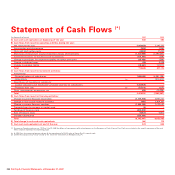 247
247 -
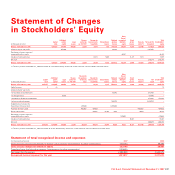 248
248 -
 249
249 -
 250
250 -
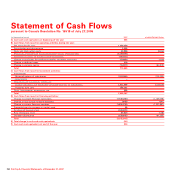 251
251 -
 252
252 -
 253
253 -
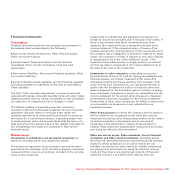 254
254 -
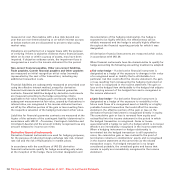 255
255 -
 256
256 -
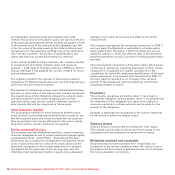 257
257 -
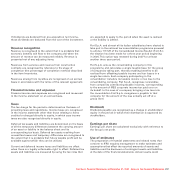 258
258 -
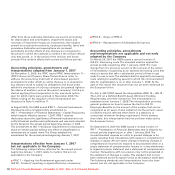 259
259 -
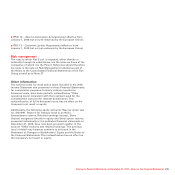 260
260 -
 261
261 -
 262
262 -
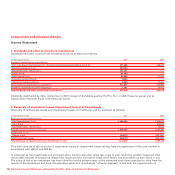 263
263 -
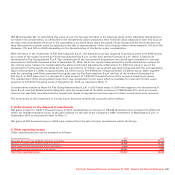 264
264 -
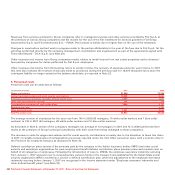 265
265 -
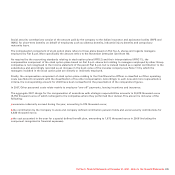 266
266 -
 267
267 -
 268
268 -
 269
269 -
 270
270 -
 271
271 -
 272
272 -
 273
273 -
 274
274 -
 275
275 -
 276
276 -
 277
277 -
 278
278 -
 279
279 -
 280
280 -
 281
281 -
 282
282 -
 283
283 -
 284
284 -
 285
285 -
 286
286 -
 287
287 -
 288
288 -
 289
289 -
 290
290 -
 291
291 -
 292
292 -
 293
293 -
 294
294 -
 295
295 -
 296
296 -
 297
297 -
 298
298 -
 299
299 -
 300
300 -
 301
301 -
 302
302 -
 303
303 -
 304
304 -
 305
305 -
 306
306 -
 307
307 -
 308
308 -
 309
309 -
 310
310 -
 311
311 -
 312
312 -
 313
313 -
 314
314 -
 315
315 -
 316
316 -
 317
317 -
 318
318 -
 319
319 -
 320
320 -
 321
321 -
 322
322 -
 323
323 -
 324
324 -
 325
325 -
 326
326 -
 327
327 -
 328
328 -
 329
329 -
 330
330 -
 331
331 -
 332
332 -
 333
333 -
 334
334 -
 335
335 -
 336
336 -
 337
337 -
 338
338 -
 339
339 -
 340
340 -
 341
341
 |
 |
Fiat S.p.A. Financial Statements at December 31, 2007 - Notes to the Financial Statements256
by independent actuaries using the projected unit credit
method. The portion of net actuarial gains and losses at the end
of the previous reporting period that exceeds the greater of 10%
of the present value of the defined benefit obligation and 10%
of the fair value of the plan assets at that date is deferred and
recognised over the remaining working lives of the employees
(the “corridor method”); the portion of actuarial gains and
losses that does not exceed this threshold is deferred.
In the context of IFRS first-time adoption, the company elected
to recognise all cumulative actuarial gains and losses at
January 1, 2004 (date of first-time adoption of IFRS by the Fiat
Group), although it has adopted the corridor method for those
arising subsequently.
The expense related to the reversal of discounting pension
obligations for defined benefit plans are reported separately as
part of the Group’s financial expense.
The liability for obligations arising under defined benefit plans
and due on termination of the employment contract represents
the present value of the obligation adjusted by actuarial gains
and loses deferred as the result of applying the corridor
approach and by past service costs for employee service in
prior periods that will be recognised in future years.
Other long-term benefits
The accounting treatment of other long-term benefits is the
same as that for post-employment benefit plans except for the
fact that actuarial gains and losses and past service costs are
fully recognised in the income statement in the year in which
they arise and the corridor method is not applied.
Equity compensation plans
The company provides additional benefits to certain members
of senior management and to certain employees through equity
compensation plans. Under IFRS 2 -
Share-based Payment
,
these plans are a component of employee remuneration whose
cost is measured by the fair value of the stock options at the
grant date recognised in the income statement on a straight-
line basis from the grant date to the vesting date, with the
offsetting credit recognised directly in equity. Any subsequent
changes to fair value do not have any effect on the initial
measurement.
The company has applied the transitional provisions of IFRS 2
and as a result the Standard is applicable to all stock option
plans granted after November 7, 2002 but which had not yet
vested by January 1, 2005, the effective date of the Standard.
Detailed disclosures are also provided for plans granted before
that date.
The compensation component of the stock option plans based
on Fiat S.p.A. shares but regarding employees of other Group
companies is recognised as a capital contribution to the
subsidiaries for whom the employees beneficiaries of the stock
option plans work, in accordance with Interpretation IFRIC 11,
and as a result is recorded as an increase in the carrying
amount of the investment, with the offsetting credit being
recognized directly in equity.
Provisions
The company recognises provisions when it has a legal or
constructive obligation to third parties, when it is probable that
the settlement of the obligation will require the outflow of
resources and when a reliable estimate can be made for the
amount of the obligation.
Changes in estimates are recognised in the income statement
for the period in which the change occurs.
Treasury shares
Treasury shares are presented as a deduction from equity.
The original cost of treasury shares and the proceeds of any
subsequent sale are presented as movements in equity.
Dividends received and receivable
Dividends received and receivable from investments are
recognised in the income statement when the right to receive
the payment of this income is established and only if declared
from post-acquisition net income.
